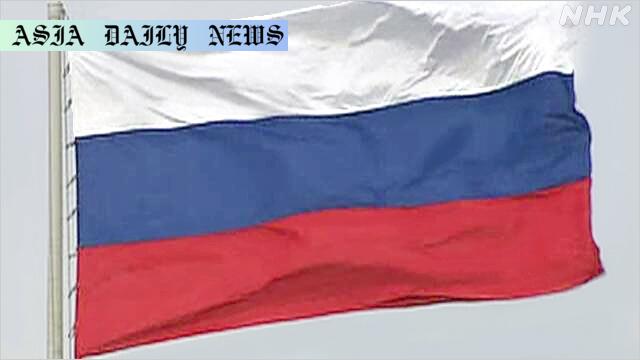Russian casualties surpass 95,026 in Ukraine conflict, BBC and Mediazona analysis show alarming figures amidst ongoing battles.
Russian casualties in Ukraine surpass 95,026 according to a BBC and Mediazona analysis.
The real death toll is speculated to range between 140,000 to 211,000 soldiers.
Russia continues its offensive, capturing settlements despite heavy losses.

Introduction: Alarming Numbers from the Battlefield
The BBC, in collaboration with independent Russian news outlet Mediazona, has uncovered staggering statistics about Russian military casualties in Ukraine. According to their analysis of open-source data, such as cemetery records and obituaries, at least 95,026 confirmed Russian military deaths have occurred since the invasion of Ukraine began. This grim tally highlights the human cost of the ongoing conflict as it approaches its third anniversary. With even larger estimates ranging between 140,000 and 211,000, these figures have become a testament to the scale of this ongoing war.
Methodology: The Role of Open-Source Analysis
The BBC and Mediazona utilized open-source information to piece together the real picture of Russian casualties, circumventing state-controlled narratives from the Kremlin. Obituaries, local cemetery data, and other documentable sources were key to their findings. This alternative approach ensures a greater degree of reliability, as opposed to relying solely on official government figures, which have often provided contrasting numbers.
Disparities in the Death Toll
While the confirmed deaths stand at 95,026, analysts agree that the actual number could be far higher. The BBC notes that many soldiers’ remains have not yet been recovered from battlefields, particularly from recent clashes. This discrepancy has led experts to speculate that the true death toll ranges from 140,000 to upwards of 211,000. Such divergence underscores the logistical challenges inherent in wartime accounting and the efforts to control narratives by both sides.
Ground Conditions: Russia’s Continued Offensive
Despite these heavy casualties, Russia’s offensive operations show no signs of slowing. The Russian defense ministry recently announced the capture of four settlements in Ukraine’s Donetsk region, demonstrating the Kremlin’s intent to consolidate territory amidst the human cost. Additionally, Russian forces reportedly regained control of a settlement in the Kursk region, which has been subject to increasing cross-border Ukrainian attacks. These developments suggest the conflict remains far from a resolution.
Geopolitical Implications and Strategic Assessments
The ongoing casualties have broader implications for Russia’s political and military strategy. High losses may erode public support for the war within Russia, complicating its domestic stability. However, the Kremlin’s aggressive territorial push hints that geopolitical gains remain its priority. Such moves are likely to galvanize Ukraine and its Western allies to increase military aid, further escalating the conflict and compounding the humanitarian toll.
The Human Cost: Stories Beyond the Numbers
Behind these numbers lie countless individual stories of loss and suffering. For families across Russia, the absence of their loved ones is a painful reminder of the war’s devastating cost. Ukrainian civilians and soldiers also continue to bear the brunt of this invasion, adding another layer of tragedy to the region’s dire humanitarian crisis. Efforts at peace are undermined by this unrelenting cycle of violence and loss.
Conclusion: A Conflict with No End in Sight
The statistics revealed by the BBC and Mediazona paint a grim picture of the cost of war. As the death toll mounts and both sides push forward with their respective goals, the prospects for a peaceful resolution seem increasingly remote. The international community must remain vigilant in its efforts to address the conflict’s humanitarian outcomes while pushing for meaningful dialogue between the warring parties.



Commentary
The Grim Reality of War
Reflecting on the reported losses of over 95,000 Russian soldiers in the ongoing Ukraine conflict, it becomes starkly evident that war extracts a massive human toll. Each number represents a life lost, a family grieving, and a community disrupted. While data analysis provides us with these figures, the real tragedy lies in the fates of individuals whose lives were upended by political decisions beyond their control.
The Challenges of Transparency
The work of the BBC and Mediazona to uncover these figures is admirable. In times of war, transparency becomes critical, especially when state narratives aim to obscure or downplay the reality on the ground. Open-source data analysis is a powerful tool in shedding light on events that governments may wish to keep hidden. However, even with careful methodology, acknowledging the limitations of these tallies is vital, particularly when thousands remain unaccounted for.
The Long-Term Implications
Russia’s continued push for territorial gains, despite enormous casualties, raises challenging questions about its strategic calculus. How long can such losses remain sustainable? How will these figures impact public sentiment within Russia? Moreover, Ukraine’s resilient defense and Western military support added into the equation mean that this conflict will shape not only the region but global geopolitics for years to come.
Hope Amidst Tragedy
Despite the disheartening statistics, the resilience and humanity of those affected by this war inspire hope. Be it the families mourning their loved ones or communities providing aid to displaced individuals, these acts of solidarity remind us of the strength of the human spirit. As the conflict endures, the international community must continue advocating for peace and supporting those caught in the crossfire.